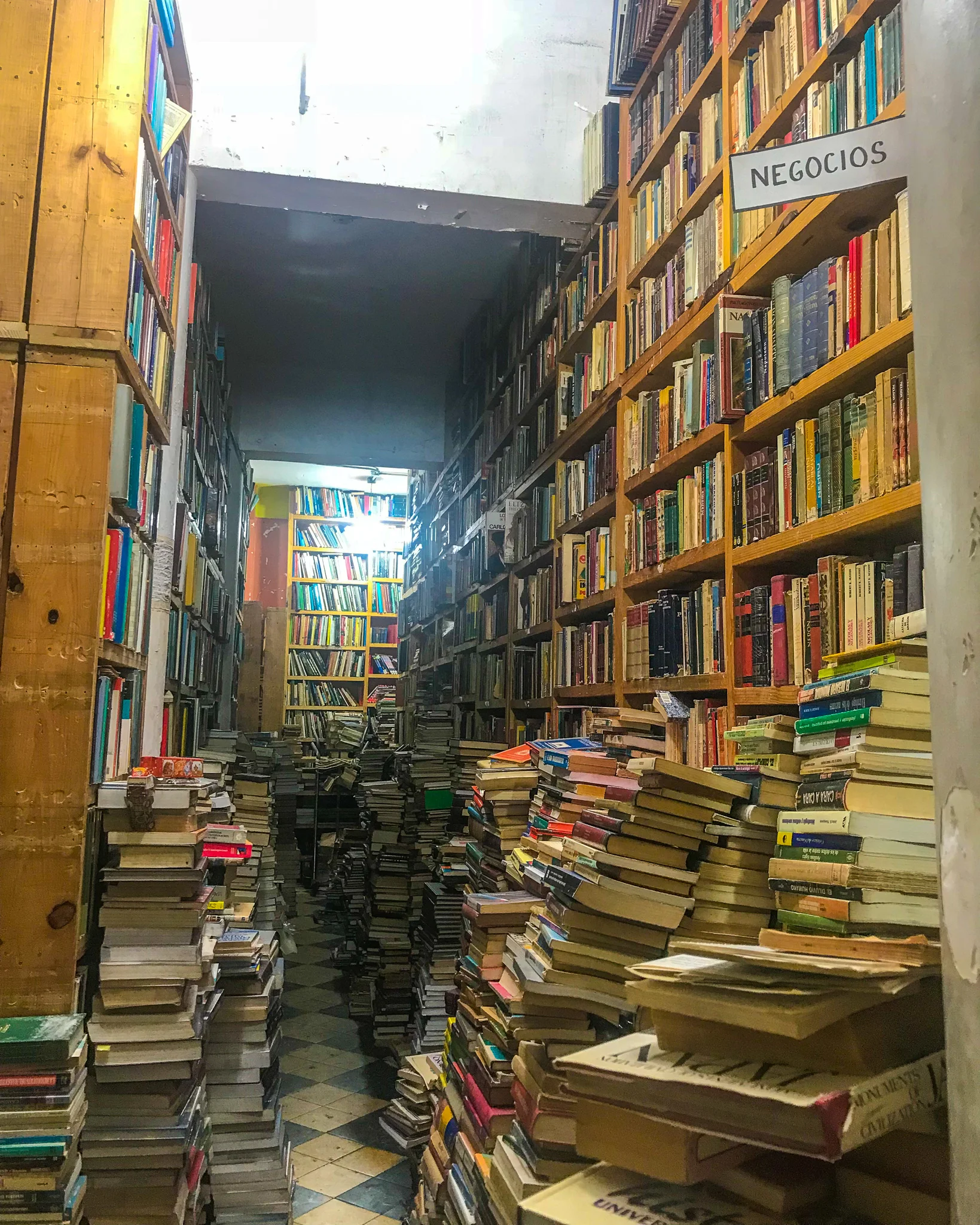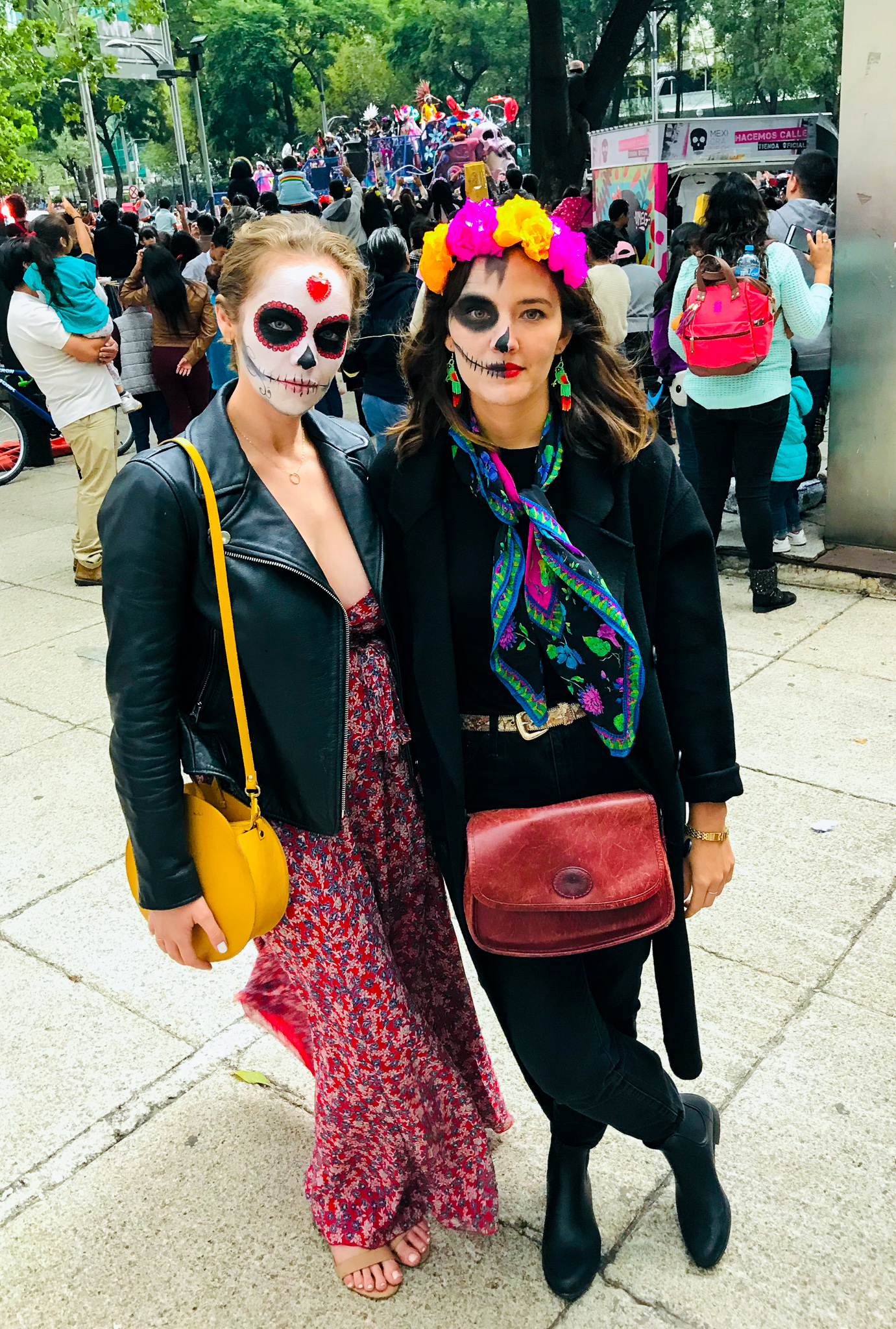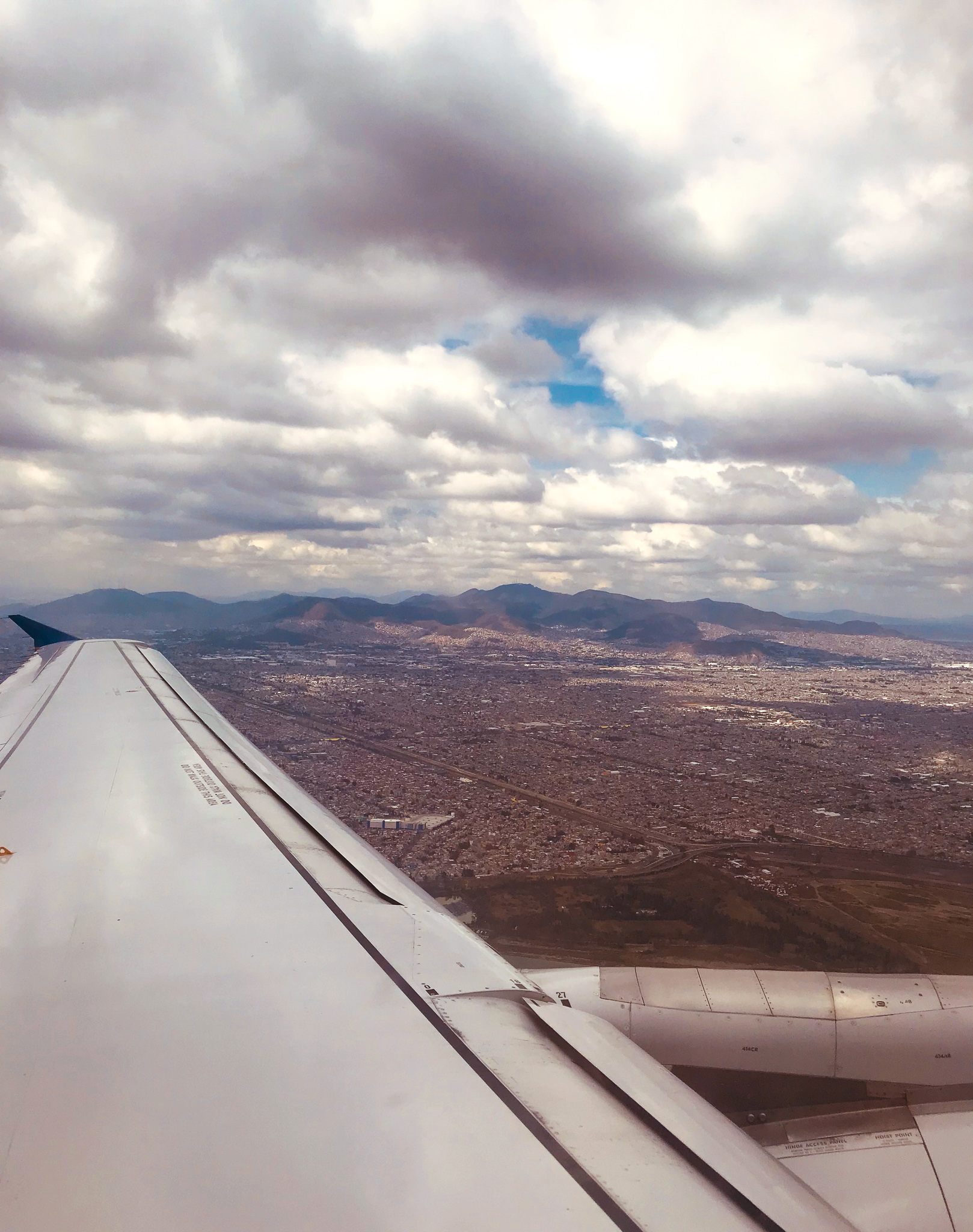Mexico City Travel Guide: What We Did, Saw, and Ate
My first thought as I passed through customs in Mexico City was how easy it was. I’ve been questioned sternly in Vancouver, had a U.S. customs agent ask me when I thought I’d get married (really), but there wasn’t much more than a smile and a stamp in Mexico. The reason this caused me to be particularly pensive was because, as I breezed through customs, thousands of asylum seekers were currently making their way through Mexico to the U.S. border, where they’re likely to be turned away.
Throughout our four days in Mexico City (which has been rebranded since my 7th grade Spanish class days from Mexico DF to Ciudad de Mexico, or CDMX), I kept thinking about the caravan and about the racism and fear that awaits them. How different those feelings might be if more Americans were to experience this city! We met several young Mexicans at a friend’s Dia de los Muertos party, and as one told me, “I love my country. I’m sure yours is great, too, but I don’t need to live there. It’s so funny to us hearing about Americans so terrified we all want to cross the border...like, I’m good, thanks!” And that makes sense! Mexico City is vibrant and festive and incredibly green, the food is excellent, and the people are kind.
Here are some of the highlights from my recent trip to Mexico’s capital:
WHAT WE DID
Letterpress: For starters, I’d highly recommend Abby Clawson’s book, This is Mexico City. An American designer living in Mexico City, she shares hidden places off the radar for most tourists, including Ernesto’s Padrino II letterpress stand. My Spanish is pretty rusty and Iain doesn’t speak it at all, so we thought we asked Ernesto for 10 cards with different letterpress designs. We ended up with 400, including 200 of Iain’s selection—just blank cards with cars on them. We sat around for two hours, much longer than we’d planned, but it’s a funny story and it was beautiful out so we were happy to sit and wonder wtf we were buying. Also, the sweetest moment of the trip for me was choosing stamps with Ernesto and each of us saying the word in Spanish. We really couldn’t communicate beyond that, but it felt like a sweet moment.
Ernesto with his letterpress stamps
Bookstores: Right near Ernesto’s letterpress stand (and The Zócalo, or main plaza) is a street lined with used bookstores. I love few things more than browsing bookstores, and it was fun to pop into a couple, but they’re fairly crowded and overwhelming, and all of the books are in Spanish (which I guess seems obvious, but I was hoping for at least a tiny English language section!).
Frida’s House: Perhaps the reason we even found ourselves in Mexico City begins with Frida Kahlo’s house, and it didn’t disappoint. I honestly don’t know when or how my obsession with the Mexican artist began, but alas, I did fly to another country to see her house and have numerous knick knacks and a painting in my living room in her likeness. Regardless, it’s a great museum. Half gallery of her art, half kept as it was when she was alive (bedrooms, kitchen, etc.), it’s interesting, colorful, and the guided audio tour is just long enough to be interesting without making you groan that there’s more.
Parade: We “lost” a day in Mexico City because we opted to celebrate Dia de los Muertos with friends. Although I pretend to be, I’m not a huge museum person—I’d much rather join in a local festival or custom, and that’s exactly what we got to do. We had our faces painted (which sparked a conversation about cultural appropriation among us Americans, but more on that another time) and went to the parade, which apparently wasn’t even a thing before the James Bond movie made it one, in 2016. It was very crowded, but worth it for the giant Frida-on-her-bed float at the end!
Dancing: On Thursday night, we went to Cafe Paraiso for drinks and dancing. Fun music, non-creepy crowd, strong drinks (and waiters that bring you said drinks on the dance floor!).
WHERE WE ATE
Contramar: We ate fresh seafood, including a whole fish, for our first lunch in CDMX. Contramar seems to be the Commander’s Palace of Mexico City in that it’s definitely in every guidebook, and yet there seemed to be a ton of locals also dining there. I’d recommend it if you have time and are craving seafood, but it didn’t stand out as a culinary highlight.
Huset: The scene at Huset is very...cool. I wasn’t blown away by the food but it’s worth it to sit outside under tea lights, with brick and ivy walls closing in the outdoor space. I ordered the avocado pizza which was very good; if I were to do it again I’d almost split that and one more appetizer, have a drink and then go somewhere else for entrees.
Pujol: Book in advance! Pujol was very hyped up and happily, it lived up to our expectations. Dimly lit with a live tree growing in the middle of the entrance, Pujol is a single story restaurant with a large patio that feels like it could be plunked right in the heart of Austin. We reserved the taco omakase, but when the waitress double checked with us, we decided we’d rather do the tasting menu and have our own table. One of my favorite dishes was a smoky street corn appetizer that tasted like fall, and I was also impressed by the mole dish (although I’m not a huge fan of mole), which juxtaposes fresh mole from the week with aged mole (in our case, it was 1,724 days old).
Mole at Pujol
Ojo de Agua: This cute spot was right around the corner from our hotel. We had juice, coffee, and huevos rancheros and it was all delicious. More casual, less scene-y, but we had to wait and there were a bunch of local families having brunch. (There are multiple locations around the city, so even if you’re not staying in Condesa, you can check and see if there’s one near you.)
Lardo: This came highly recommended as a breakfast spot but unfortunately, one can only eat so many meals in a 72-hour period so we ended up just grabbing drinks and hummus at Lardo. There was a huge line (I should note most people were speaking English) outside around 10 AM, which is super early for Mexico City, so it’s probably worth the hype.
Masala y Maiz: We went here for brunch and had the best fried chicken of our lives. Indian/Mexican fusion in a very hip, minimalist space. Make a reservation—the NYT wrote about it the week before we came, so I expect it will only get more difficult to get a seat.
In front of Masala y Maiz
Mercado de Carmen, Coyoacán: indoor market with ~10 food stalls (and a small bar in the back) about a 10 minute walk from Frida’s house. We had our Pujol reservation that night so just wanted something to tide us over, so we ordered quesadillas from one of the stall for less than $5. It was clean, fairly quiet, and easy to sit down. And our very simple lunch was delicious!
Taqueria Orinoco (fast food): Mexico’s In ‘n Out. Super delicious, get it late night. All the tacos are great and the BEANS. My mouth is watering. Super cheap and casual, just order everything.
WHERE WE STAYED
Casa Decu: We loved our cute little hotel! This boutique hotel is hidden away (seriously, our taxi drove by it and we were very confused when we were dropped off) in Condesa, on a quiet side street and a block from a park seemingly frequented by every dogwalker in CDMX. Our room had a little living area with a couch and kitchenette, and we had coffee on the roof each morning.
Casa Decu
Frida Kahlo’s paint set
More food - Pujol


















